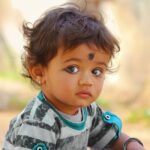Bringing a newborn into the world is an exciting yet daunting experience. Among the myriad of preparations, one of the most common questions that new parents ask is, “How many newborn clothes do I need?” This question might seem simple, but with the plethora of baby clothing options and sizes available, it can quickly become overwhelming. In this comprehensive guide, we’ll explore everything you need to know about outfitting your newborn, ensuring that you’re prepared without overdoing it.
Understanding Newborn Clothing Sizes

Before diving into the specifics of how many newborn clothes you need, it’s essential to understand the sizing. Newborn sizes typically cater to babies up to 7-8 pounds, but since babies grow quickly, they might outgrow these clothes in just a few weeks. It’s also common to find “0-3 months” sizes which can fit babies up to 12 pounds. Keeping this in mind, you’ll want to have a balance of newborn and slightly larger sizes.
Factors to Consider When Deciding How Many Newborn Clothes to Buy
- Laundry Frequency: If you plan to do laundry daily, you can get by with fewer clothes. However, if laundry is done less frequently, you’ll need more outfits to bridge the gap between washes.
- Baby’s Size and Growth Rate: Some babies are born larger and may skip the newborn size altogether, jumping straight to 0-3 months. Conversely, smaller babies might stay in newborn sizes longer.
- Season and Climate: The time of year and your local climate will influence the type and number of clothes you need. Warmer climates may require more lightweight, breathable clothing, while colder climates necessitate layers and warm fabrics.
- Spit-ups and Diaper Blowouts: Newborns are notorious for these, and having extra clothes on hand can save you from frequent laundry loads.
- Gifts and Hand-me-downs: Many parents receive baby clothes as gifts or inherit them from friends and family. Assess what you already have before purchasing new items.
Essential Newborn Clothing Items

To address the core question, “How many newborn clothes do I need?”, let’s break down the essential items you should consider:
- Onesies: These are the staple of any newborn wardrobe. They’re versatile, comfortable, and easy to layer.
- Sleepers/Footies: Ideal for nighttime and naps, these one-piece garments keep your baby warm and cozy.
- Bodysuits: Similar to onesies, but usually without legs, making them perfect for layering or warm days.
- Pants/Leggings: Useful for cooler days or to mix and match with bodysuits and onesies.
- Hats: Newborns lose a lot of heat through their heads, so hats are essential, especially if your baby is born in a cooler season.
- Socks/Mittens: Socks keep tiny feet warm, while mittens prevent babies from scratching themselves.
- Swaddles/Sleep Sacks: These help in keeping the baby snug and secure, aiding in better sleep.
A Practical Guide to the Number of Each Clothing Item
To give you a clearer picture of “how many newborn clothes do I need,” here’s a practical list:
- Onesies: 7-10 pieces
- Sleepers/Footies: 7-10 pieces
- Bodysuits: 5-7 pieces
- Pants/Leggings: 5-7 pairs
- Hats: 2-3
- Socks: 5-7 pairs
- Mittens: 3-5 pairs
- Swaddles/Sleep Sacks: 3-5
This list provides a comfortable range, ensuring that you have enough clothing to handle daily changes, accidents, and the weather without needing to wash clothes constantly.
Tips for Buying Newborn Clothes

- Opt for Soft Fabrics: Newborn skin is delicate, so choose clothes made from soft, breathable fabrics like cotton.
- Easy to Change: Look for clothes with snaps or zippers that make diaper changes quick and easy.
- Seasonal Considerations: Think about the season your baby will be born in. Buy more layers for winter babies and lighter clothes for summer babies.
- Gender-Neutral Options: If you plan to have more children, gender-neutral clothing can be reused regardless of the baby’s gender.
- Sales and Second-hand: Babies outgrow clothes quickly, so consider buying second-hand or taking advantage of sales to save money.
Beyond Newborn Clothes: What’s Next?
Since babies grow rapidly, it’s prudent to also consider clothes for the next size up. Stock up on a few 0-3 month outfits so you’re prepared when your baby outgrows their newborn clothes. Here’s a brief guide for 0-3 months:
- Onesies: 10-15 pieces
- Sleepers/Footies: 10-15 pieces
- Bodysuits: 7-10 pieces
- Pants/Leggings: 7-10 pairs
- Hats: 2-3
- Socks: 7-10 pairs
- Mittens: 3-5 pairs
- Swaddles/Sleep Sacks: 3-5
How Many Newborn Clothes Do I Need? Organizing Your Newborn’s Wardrobe
Once you’ve gathered your newborn’s clothes, organization is key to making your life easier:
- Categorize by Type: Keep onesies, sleepers, and bodysuits in separate drawers or bins.
- Size Order: Arrange clothes by size so you can easily transition as your baby grows.
- Frequent Use Items: Place frequently used items like onesies and sleepers in easy-to-reach locations.
- Rotate Seasonal Clothes: Keep current season clothes accessible and store out-of-season items.
Common Newborn Clothing Mistakes to Avoid
- Buying Too Much: It’s easy to overestimate how many newborn clothes you need. Stick to the basics and remember you can always buy more if necessary.
- Ignoring Seasonality: Ensure the clothes match the season. Buying heavy clothes for a summer newborn or lightweight outfits for a winter baby can lead to discomfort.
- Overlooking Practicality: Fancy outfits are adorable but often impractical for everyday wear. Focus on comfort and ease of use.
- Not Considering Growth: Babies grow quickly, so having a mix of sizes can help you stay prepared for growth spurts.
Conclusion: Balancing Needs and Practicality
In answering “how many newborn clothes do I need,” the key is finding a balance between being prepared and avoiding excess. Start with the essentials, keep in mind factors like laundry frequency and climate, and don’t forget that babies grow quickly. As you gain experience, you’ll get a better sense of what works best for your baby and your routine.
Remember, every baby is different, and what works for one family might not work for another. By focusing on the essentials and staying flexible, you’ll be well-prepared to dress your newborn comfortably and stylishly. Enjoy this special time with your little one, and happy parenting!







